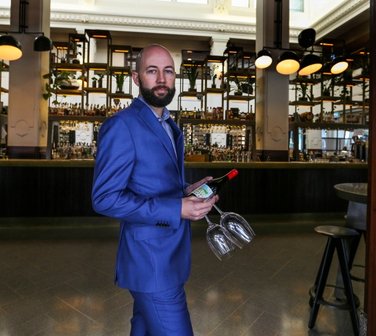Perth gets a grilling
South American food is shaping up as the year’s hottest culinary trend, with smoky Argentinean barbecue, black bean Brazilian stew and tangy Peruvian ceviche adding a new flavour dimension to what we eat. It’s a melting pot of culinary traditions from a continent that gave us chocolate, peanuts, potatoes, tomatoes, chillies and corn.
Argentinean-born trailblazers Max Pineiro and wife Emily DeLeuil, of El Asador, have been barbecuing their way around festivals, weddings and events using a couple of commercial Webers to replicate the “asado” experience.
They introduced their El Asador range of condiments four years ago, starting with adobo marinade and chimichurri, the piquant green sauce made from parsley, garlic, oil, vinegar and herbs.
“El Asador means the barbecuer — and asado is a barbecue, ” Ms DeLeuil said. “The first time I had this style of cooking in Argentina, I was blown away by the taste; it was so different. It’s done on a grill called a parrilla, which uses hot coals, so you end up with a beautiful smoky flavour.
“Unlike an Australian barbecue, it’s a slow-cooking process, so beef ribs, which are traditional, take about an hour, but we also use skirt steak and rump. The cuts are quite specific, so with ribs, for example, the length and width have to be right, otherwise it’s not the real deal.”
For snacks, choripans (hot dogs) made with their own chorizo, sweet and savoury deep-fried pastries called empanadas and morcilla (black pudding). Dulce de leche, a caramel made from heavily reduced milk and sugar, is sandwiched in shortbread-style cookies called alfajores for a sweet treat.
“Perth is certainly adventurous enough in its tastes and has a strong barbecue culture to welcome this style of cooking, ” Young George’s Rob Bates- Smith said. He’s had wine interests in Argentina since 2006 through Jed Wines and is scheduled to open another wine bar in St Quentin Avenue, Claremont, called Asado, at the end of the year with John Poynton and the FJM Property Group’s Adrian Fini, Barry Jones and David Mack.
“It will have a traditional, coal- fired parrilla grill and there’ll be a combination of table service and snack food, like choripans and empanadas, ” he said.
Pata Negra’s David Coomer said it was an authentic way of cooking that originated in Spain and he was planning to fire up an asado in the restaurant courtyard midweek in summer to roast a whole pig or lamb.
“It’s typical of the Basque country seaside way of life, ” he said. “I had it specially made a few years back and we’ve used it as an extension of the kitchen to do things like chorizo and sardines, but it does lend itself to a more communal way of eating because you can get about 40 people around it for a meal.”
On the Brazilian front, Luciano Agnoluzzo is doing the rounds in his Guerilla Foods truck, Lapa Brazilian Barbecue is adding a Fremantle churrascaria to its Subiaco and Armadale outlets specialising in traditional rotisserie meat feasts and Comida Do Sul’s Joel Wynn Rees and Dany Flauzino have a second truck on the cards. Fans can’t get enough of their prato feito with kale, black beans, beef rump steak and cassava chips.
“It’s a substantial meal and one people from all classes in Brazil will have for lunch, ” Mr Wynn Rees said. “That’s our top seller, followed by cohinxa, a popular bar snack made from sweet and regular potato, shredded chicken and paprika. Mention it to a Brazilian and their eyes always light up.”
At the Publican Group’s latest venture, Public House in the CBD, head chef Luis Vergara is drawing on his Peruvian heritage to introduce crispy tacacho croquettes from the Amazon jungle, silky smooth sun-dried yellow chillies called aji mirasol and luscious desserts, such as “tres leches” cake made with three types of milk.
It makes sense. Peru was named the world’s leading culinary travel destination at the 2013 World Travel Awards for the second year in a row.
“Tourists are going to Peru now more for the food than Machu Pichu or any other archaeological and cultural attractions, ” Mr Vergara said. “I have put a modern Australian twist on the dishes to make them more accessible because they’re essentially rustic foods that have stood the test of time.
“For example, tacacho is traditionally made with plantains but we do ours with yucca root instead. It’s boiled, fried and mashed with braised pork like a croquette and, I think, even tastier than the original because it’s crispy outside.”
Publican Group national executive chef Telina Menzies said the South American concept had been on the drawing board for two years in Perth because of what was trending in London and New York.
“It’s certainly picking up in Melbourne, ” she said. “For me, the clincher was the slow- cooked meat; also Peruvian ceviche — and it’s only going to get bigger.”
PHOTO: Emily DeLeuil and Max Pineiro, of El Asador
© The West Australian
More Dining news: thewest.lifestyle/food/dining









